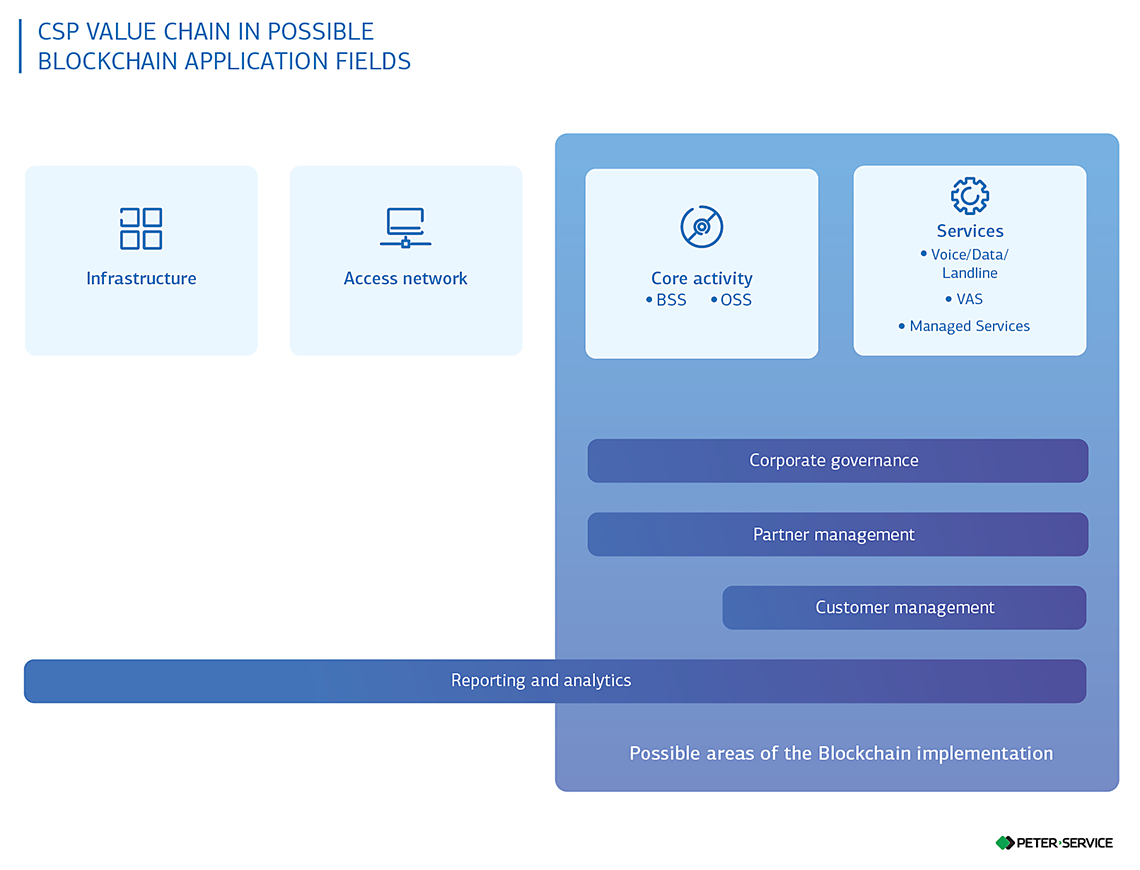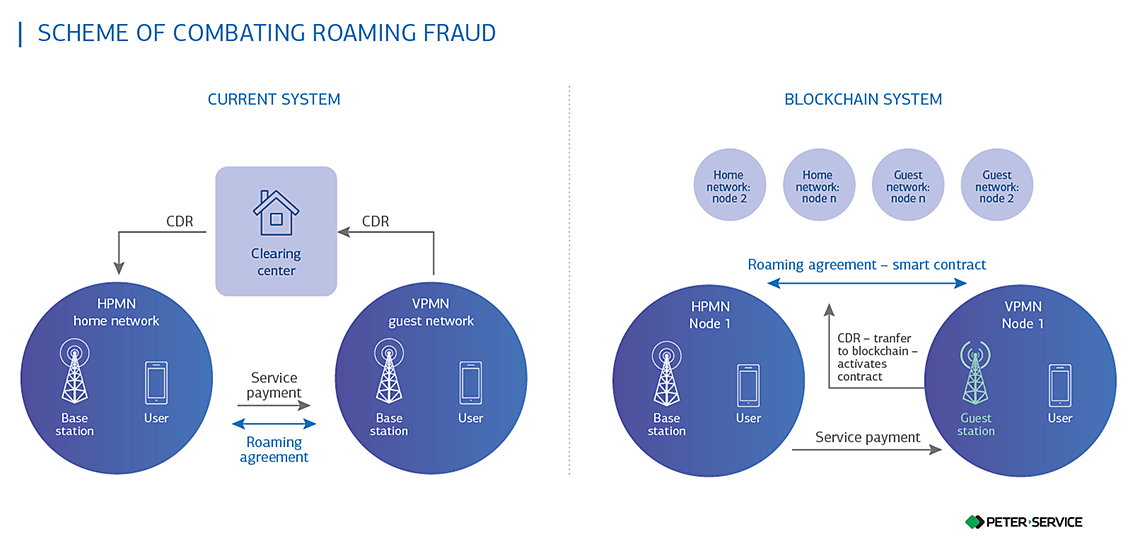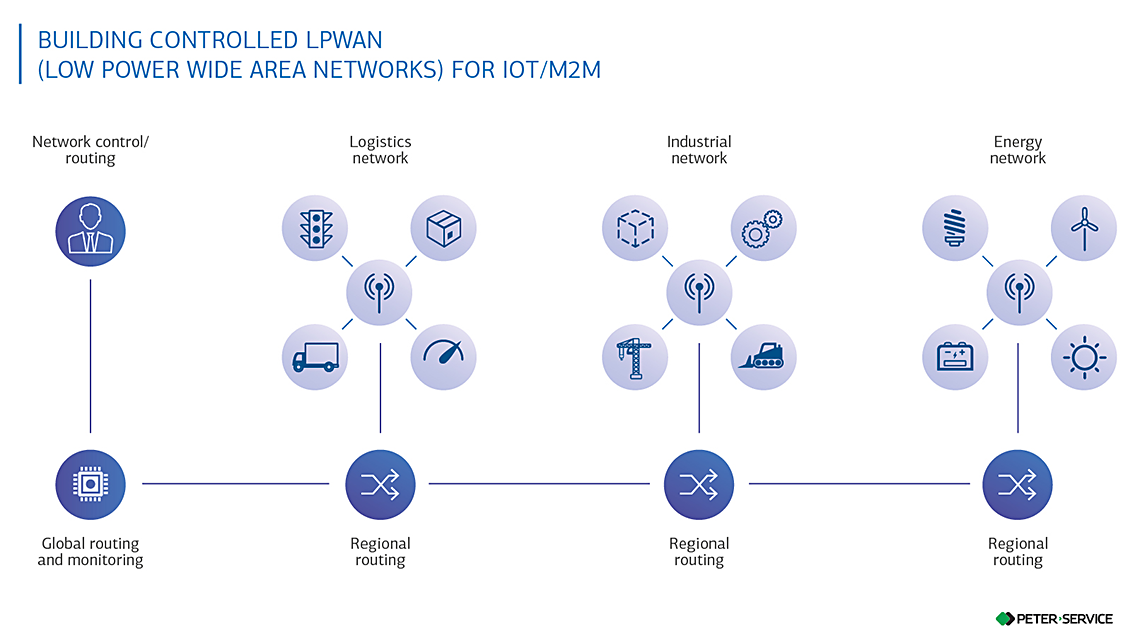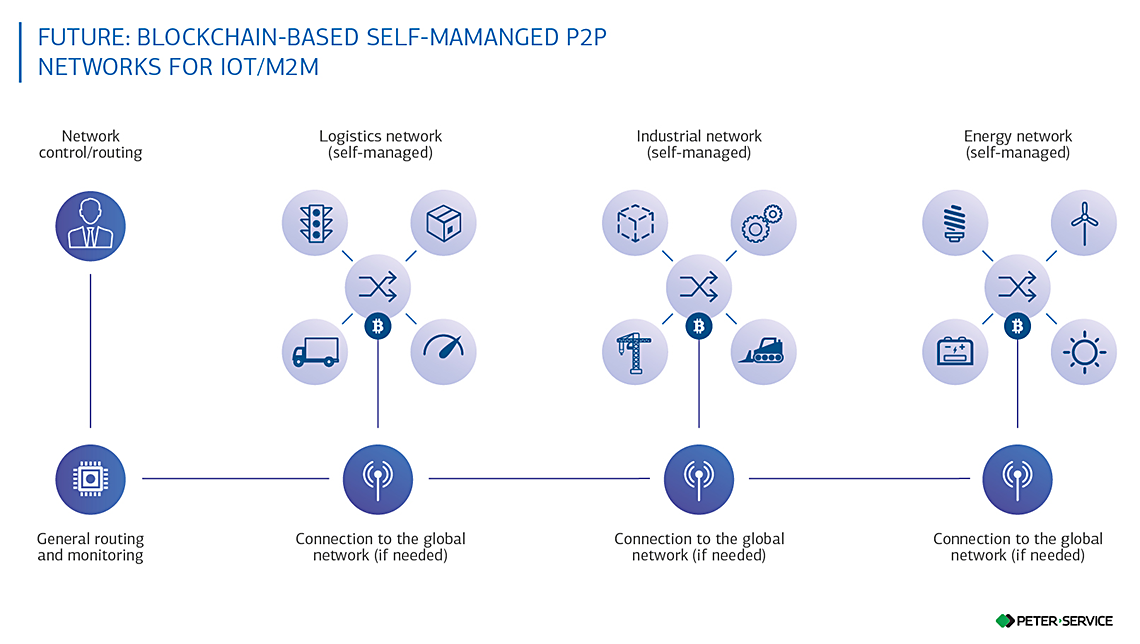Blockchain in Telecom: a New Digital Transformation Tool
What do we know about the Blockchain?
For a few years, the Blockchain technology has been quietly rooted as a basis of the Bitcoin until, eventually, it moved far beyond the cryptocurrency concept. It happened thanks to the emergence of blockchain platforms and smart contracts. Is there a place for this new technology in Telecom? If yes, where is this place? Olga Shunevich, Senior Analyst, Peter-Service, explains the principles behind the Blockchain and makes a forecast for years ahead.
Blockchain technology
The Blockchain is an open, distributed storage technology for records of any types. Records are placed in blocks linked to each other to form a continuous chain, an infinite "digital chronicle".
The key feature of the Blockchain is its decentralization. All users represent a network of computers each storing blockchain data. This makes the network very stable: a blockchain continues to exist even with at least one active user.
Blockchain records are open and each user can verify their validity. The technology employs cryptographic methods to protect data and users. Therefore, for the Blockchain, trust does not depend on a controlling stakeholder or an intermediary, rather it is integrated to the very mechanics of the data chain.

Besides, each blockchain record is fixed in time, it is read-only and cannot be erased or changed.
Let's see how Communication Service Providers (CSP) can take stock of reliability, security, high speed transaction capability and fail safety of the Blockchain to increase their performance.
Blockchain in Telecom: Cases
CSPs have traditionally owned the entire customer value chain – from building network infrastructure to rendering core and added value services. Yet, tough competition with OTTs and "digital invaders" as well as constantly decreasing revenues from core services are leading this chain to a break-up making operators change their business paradigm, search for new revenue sources and cut costs.
The Blockchain can become one of the tools that will help operators transform to full-fledged Digital Service Providers securing a sound position in the rapidly changing market.
Delloite, an international consulting company, considers several potential application areas for the Blockchain in the value chain of CSPs:

Delloite believes that the Blockchain can make the biggest difference in key governance frameworks and added value services offering opportunities to reduce costs through increased performance of processes and to step up revenues from new offers.
Alternatively, Analysys Mason, an analytics firm, defines the following domains for the Blockchain introduction:

Let's look into some of the domains in more detail.
Internal OSS/BSS processes. The Blockchain can improve processes such as billing, eSIM provisioning, transferring of number databases.
Digital identity and data management. Operators can discover a new revenue source by providing partners with a system of digital identity and authentication as a service (Identity-as-a-Service) implemented through a blockchain. CSPs still do not have a foothold in authentication processes, although they possess vast amounts of subscriber data. In this particular case, the blockchain plays the role of a repository for identification operations.
On top of that, CSPs can further extend this functionality to a service for verification, management and storage of data. As an example, a CSP can supply a university with a verification service of alumni certificates stored electronically in the operator's blockchain. Moreover, a CSP can store any other documents of subscribers, such as insurance policies, air tickets, hotel bookings, etc.
Fraud management. Introducing the Blockhain to exchange data inside a network and among networks will help curb losses from fraud. E.g. a closed blockchain can be deployed between two CSPs having a roaming agreement. This agreement is then implemented as a smart contract between the home and the guest networks and initialized each time a transaction containing CDR data is sent through the blockchain network. Doing so prevents roaming fraud.

Roaming. A hybrid blockchain can simplify deployment of databases that are, normally, costly to integrate. For example, it can be a database used for subscriber authentication during roaming calls.
Operations with digital assets. Since blockchain transactions are far less expensive than credit or debit cards transactions, a blockchain can be adopted as a basis for micro payments to pay for digital assets: music, mobile games, gift certificates or loyalty bonuses.
M2M, IoT. A blockchain can ensure a secure P2P connection for thousands of IoT devices by building an economically viable and self-managing network. E.g. pieces of plant machinery will be capable to communicate and authenticate through the blockchain themselves to manage manufacturing processes. Active human intervention will only be needed for maintenance of machines. Besides, this will reduce the risk of downtime due to machine failures.


- 5G. To ensure 5G access everywhere in various networks, operators will have to manage a variety of nodes and access mechanisms. The choice of the fastest access node for every user or device is a key future challenge ahead. The blockchain can ensure a new generation of mechanisms for selecting an access technology.
- Smart City. An open blockchain perfectly fits when there is a need for a high level of process transparency, e.g. in smart city projects.
- Mobile commerce. One of the use cases for the blockchain is international money transfers among subscribers of a telecom operator's business divisions in different countries. The blockchain will help reduce costs of such transactions.
- eHealth. With a closed blockchain, it is possible to build a secure repository of electronic medical records.
Summing up, the Blockchain can dramatically transform and optimize CSP's business processes while raising safety, transparency and speed of transactions and cutting costs.
The Blockchain opens new opportunities to build a partner ecosystem and create new revenue sources. This technology will help CSPs acquire a new and better position in this ecosystem.
Despite its bright prospects, the development of the Blockchain technology is still at a very early stage. The next few years to follow will be the period of experiments, testing and standardization of this technology. Yet, telecom operators that have launched digital transformation of their business need to keep a sharp eye on this technology even today and explore opportunities of applying this technology in their business.
Stay connected!